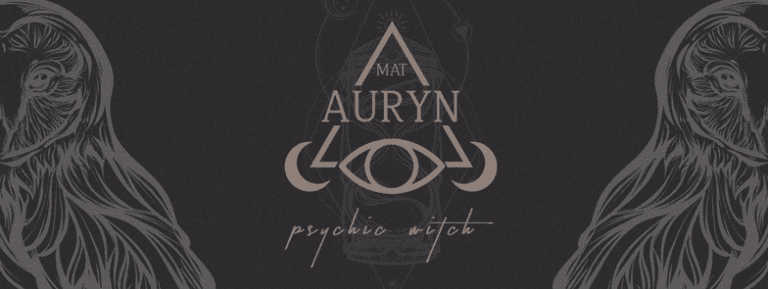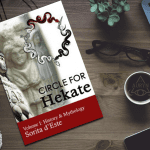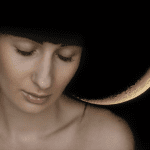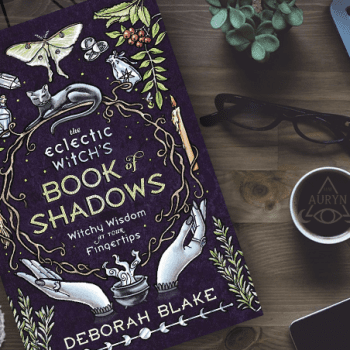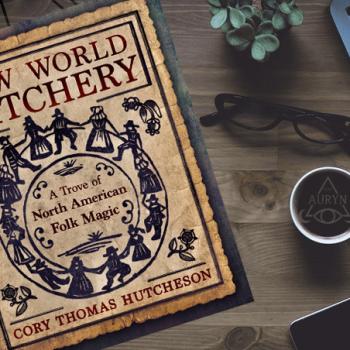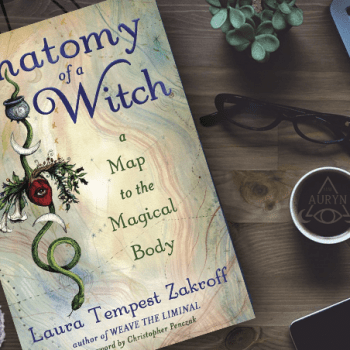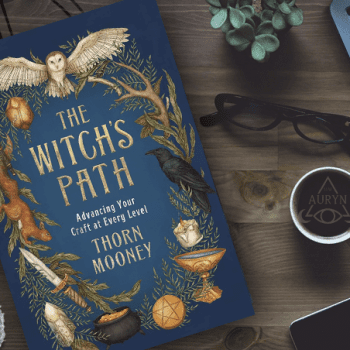Morgan Daimler has been a witch since 1991, following a path based on the Fairy Faith blended with neopagan witchcraft. Her poetry and prose has been published in different places including eight anthologies, Pagan Dawn magazine, and Witches and Pagans magazine. She is the author of a selection of books including Pagan Portals: Fairy Witchcraft, Pagan Portals: the Morrigan, Fairycraft, Pagan Portals Gods and Goddesses of Ireland, Fairies, and Travelling the Fairy Path. She also has a self published urban fantasy/paranormal romance series, Between the Worlds. She blogs on Patheos and also at her own blog. You can find her on twitter and facebook.

I like to ask most people this. How did you discover magick? Did you have any experiences as a child that you feel foreshadowed this path?
I’ve always seen and experienced the Otherworld, and I think that definitely influenced me and my belief. Growing up magic and what other people called the supernatural was a reality rather than a theory or a goal but I always thought it was my own personal eccentricity; I didn’t know anyone else who saw things or had the experiences I had. So when I discovered Cunningham’s Wicca – and later Buckland and Leek – it was an epiphany for me. It showed me that these things were real for other people too and more than that there was a whole religion based around these beliefs. I was eleven when I started reading about modern witchcraft and that was life changing for me.
![Fairy Witchcraft winter altar [Morgan Daimler]](https://wp-media.patheos.com/blogs/sites/771/2017/06/morgan-01.png)
My practice is layered by my experiences and the combination of different influences that have shaped me to this point. That includes modern witchcraft, Irish polytheism, Druidism (although I no longer identify as a Druid), and Heathenry. I see the Fey folk, by many different names, as the thread that binds everything I do together, whether we are looking at the Icelandic huldufolk, Germanic elben, or the Irish aos sí. Between the belief in and acknowledgement of the Hidden People and my practice of witchcraft I think that forms the core of my practice. I’m very focused on the actual practice of magic as well as creating and strengthening connections to the Otherworld and the beings within it.
![Cheathrú Cheal, Ireland, October 2016 [Morgan Daimler]](https://wp-media.patheos.com/blogs/sites/771/2017/06/morgan-03.png)
It’s an intentional decision. Honestly I don’t know that there’s a wrong way to spell fairies, especially if we go back before standardized spelling of English – you can find some really wacky version in some of the older material where they get very enthusiastic with their vowels. The books that I read which discuss fairies are either folklore or academic material and those books tend to use the modern standard ‘fairy/fairies’ spelling for the most part. I’m actually severely dyslexic so its easier for me to stick with the standard spelling, which spellcheck likes, than to try to use any of the variations floating around out there. I have a hard time with ‘ae’ and ‘ea’ getting switched around which makes faery harder for me and using fairy is also going with the version I see the most often. So basically its easier for me to spell correctly and in line with the academic standard.
In my mind I place you as “the” pagan expert on fairies. How did you come from believing in fairies to knowing fairies as a reality? Did you have an interaction with fairies before you began researching them, or did you research them first before you had an experience with them?
I’m a bit backwards I guess for this compared to a lot of pagans, in that for me they started out as a reality and from there I fleshed out what I knew from experience with folklore and stories. That was really the impetus that drove me to research the subject, a need to put my own perceptions into context and have a framework to understand them. My family heritage is, in part, Irish and I was drawn very early to Irish mythology and folklore; I found that made a lot of sense for me, more so even than the cultural context I had based in American and Native American folklore. Celtic fairylore became something that grounded me at a time when I needed to have some reference point to relate my own perceptions to and I’m really grateful for that. A lot of people talk about the Second Sight as a blessing, but I have never found it to be so and especially during my teenage years it was an enormous struggle to deal with.
![Community fairy altar with oracle cards and offering candle [Morgan Daimler]](https://wp-media.patheos.com/blogs/sites/771/2017/06/morgan-05.png)
Oh that’s always a fun question. This is usually the part where I start waving my cane around and yelling at the kids to get off my lawn. More seriously though, I think any time we’re talking about misconceptions about the Good Neighbours we’re venturing into complicated waters because pretty much any statement you can make about Themselves is going to be true as much as it isn’t, just because it’s such a diverse subject. That said though there’s a couple things which may be true of a very small selection of Themselves but that I see getting projected out onto all of them that I could say are big misconceptions. Like I see a lot of people who think fairies are all tiny winged garden sprites, and that is certainly not a wider truth in folklore or my experience. I also see people confusing all Fey folk with nature spirits or elementals, and again that may be true of a portion but not the majority. Probably the biggest one I see though that I end up talking a lot about in my writing and classes is the idea that the Othercrowd are harmless, helpful, guide-type spirits who want to help humanity and that is not only definitely not true of the majority but also directly contradicts most folklore. Not just Celtic but anywhere you find these beings in folk belief they are usually seen as potentially helpful but also dangerous and needing careful propitiation and handling to avoid angering.
What are some of the dangers of working with fairies, and why would one want to work with them despite that?
The dangers of working with the Fair Folk, depending on the sort we’re talking about, include everything from bruising, pinching, and knotted hair, to domestic disruptions including spoiled food and broken items around the home, to illness, ill luck, madness, and death. The less powerful ones would be on the physical assault end of things. House fairies tend to go after weaknesses around the home. And the most powerful of the Good People will seriously mess a person up if they are motivated to. There’s a reason that traditional cultures have so many protections against them, and so many methods of avoiding their anger. The flipside of that is that having their favor means potentially being blessed with good luck, prosperity, health, and protection, and especially for witches with knowledge and esoteric teachings. We hear about witches who were connected to the Fey folk who were taught herbal healing and magic, for example, and also were given things. This is in line with my own experience. It’s not the safest spirituality or practice to embark on but it has a lot of wisdom in it and it also offers a person the chance to act as a mediator between the two realms, which I believe is both important and necessary. Like many dangerous things, it can be done with minimal danger if one is careful and knows what one is doing.
![Fairy Witchcraft summer altar [Morgan Daimler]](https://wp-media.patheos.com/blogs/sites/771/2017/06/morgan06.png)
More than one. I always tend to tell the same stories when I’m asked this question, so let me think of a different one, besides the white fairy hound or the fairy moth that saved my life, not that those aren’t good stories. Okay, let me give you two, since we were talking about the good and the bad of dealing with fairy.
When I was very little, around 4 or 5 I think, my bedroom was on the second floor facing the street and the streetlight would shine in through the tree branches, casting shadows on my walls. And I was little so this really scared me. I’d lay awake at night watching the shadows move, convinced that monsters were going to get me, which may sound silly now, but for a little kid alone in the dark it was serious. And there was this fairy woman who would come to me when I was crying in my bed and she would comfort me and tell me not to be afraid of the dark or the shadows, until I felt safe enough to fall asleep.
On the other hand, I’ve seen the Slua Sí a few times in my life, the Fairy Host, and they scare me spitless. Once, this was in February I think, I was going outside with my kids to run an errand, and I was standing in the doorway, half in the house and half out, and I heard the sound of hooves and bells. I looked up, my kids in front of me in the yard heading to my car, and there was a standing whirlwind in the road, which is a sign of the Slua, and in it I could see a single rider on a horse – I couldn’t see the others, but I knew they were there, I could hear them. And he looked right at me and I looked right at him, which is a huge no-no, you aren’t supposed to let them know you can see them when you can avoid it. And my kids were between us, and I honestly don’t think I’ve ever been so scared in my life. That’s the truth. But he just looked at me for maybe 10 seconds and then they all moved on. And I was shaking but I got my kids in the car as fast as I could and we went down to the store and I bought cream and honey for offerings. And as we’re coming out of the store we start hearing sirens, and we watch as several fire trucks and police cars go by. That was unnerving too. I found out later that a few miles away right after I’d seen the Slua, six telephone poles had been broken about 6 or 7 feet off the ground and had fallen. No one could explain it, although to this day I believe it was the Fairy Host that caused it.
![Cheathrú Cheal, Ireland, October 2016 [Morgan Daimler]](https://wp-media.patheos.com/blogs/sites/771/2017/06/morgan-02.png)
I don’t think my fiction influences my non-fiction at all, but my non-fiction definitely does influence my fiction. I have a series of urban fantasy/paranormal romance books and they are heavily based in Celtic mythology and fairylore, although because it is fiction I do take creative liberties. Sometimes I really struggle with the need to differ from traditional folklore in my fiction but I try to remind myself that ultimately I’m not writing modern folklore I’m writing modern fiction and there’s no way to have some of the plots I want in the world I’ve created if I adhere 100% to traditional folklore. That’s an ongoing struggle though, I’ll be honest, because I do try to be as accurate as I can with my magical theory and my folklore.
![Blessing jewelry, 2015 [Morgan Daimler]](https://wp-media.patheos.com/blogs/sites/771/2017/06/morgan-04.png)
Fairy Witchcraft is based in the Fairy Faith with a neopagan and early modern witchcraft spirituality. So to answer the second part first, the Fairy Faith is similar to Fairy Witchcraft in that both are based around a belief in fairies and practices designed to protect against them and gain their favor, depending on circumstance. Both involve a body of belief based in folklore about the Good People. However Fairy Witchcraft is much more willing to engage with and truck with fairies whereas the Fairy Faith is more aimed at protecting against them or warding them off. They also differ in that the Fairy Faith is generally Christian and usually Catholic and obviously Fairy Witchcraft is not. In the same way Fairy Doctors are usually Christian, most often Catholic, and that’s a main difference between that and Fairy Witchcraft; also a Fairy Doctor generally doesn’t proclaim themselves such but is given that title by their community whereas a Fairy Witch would decide for themselves if they wanted to call themselves that and take on that title. On the otherhand Fairy Doctors are people, traditionally, who are every knowledgeable about the Othercrowd and are able to come in and tell in a situation whether what’s going on is being caused by fairy maliciousness, or the evil eye, or harmful witchcraft, often using divination. This would be similar to what – ideally – someone practicing Fairy Witchcraft should be able to do. Fairy Doctors could also offer a cure or solution for magical or fairy caused problems and again this would be a similarity between the two. When I created Fairy Witchcraft as it is today I based it heavily on both the Fairy Faith and traditional Fairy Doctors and Bean Feasa so in belief and practice there’s a lot of similarities, but the traditional Irish practices are overtly Christian, in approach if not always explicitly in practice, and that’s a pretty major difference.
![[Morgan Daimler]](https://wp-media.patheos.com/blogs/sites/771/2017/06/morgan07.png)
I always have projects in the works. I like to joke that I’m like one of those fish who dies if they stop swimming except for me swimming is writing. I have three books coming out next year through Moon Books: Pagan Portals Odin (March 2018), Travelling the Fairy Path (September 2018), and Pagan Portals the Dagda (October 2018). I’m currently about halfway through writing my 7th novel which I anticipate releasing early next year. I’m also under contract for a Pagan Portals on Manannán mac Lir and am doing a Pagan Portals book on the Fairy Queens for Moon Books that is being released one chapter at a time as I write it on Moon’s blog. That’s really fun. There’s a couple other writing projects that are in the planning stages. I have two sacred site tours scheduled next year, one to Ireland and one to Iceland, with Land, Sea, Sky travel where I’ll be co-facilitate as a guide discussing the mythology and folklore. And next year I’m also participating in two different online conferences, one called A Year with Our Gods where I’m speaking about Brighid for their Imbolc conference, and one for the Tuatha Dé Morrigan where I’m doing a workshop on Myths and Misinformation on the Morrigan. Those will be my first online workshops, so that’s exciting and I’m looking forward to expanding into a new format.

